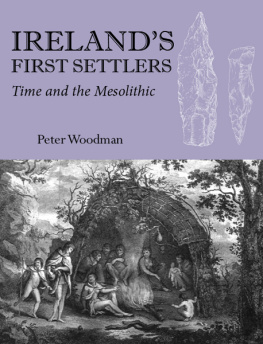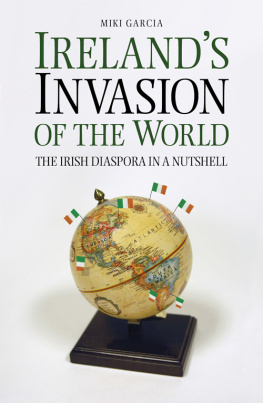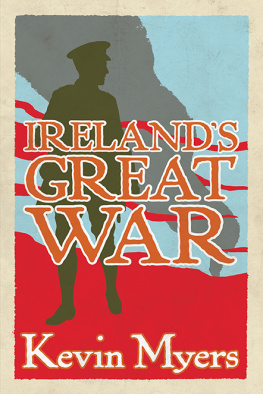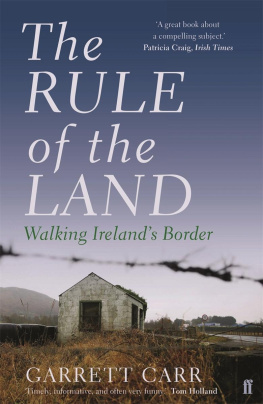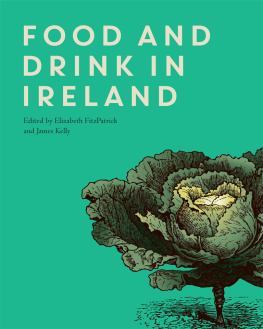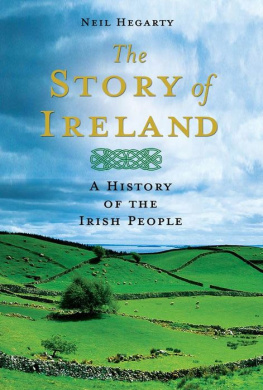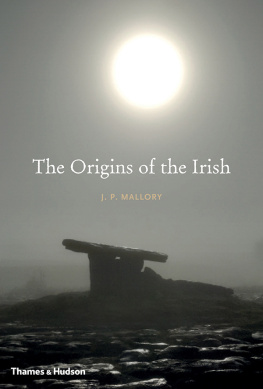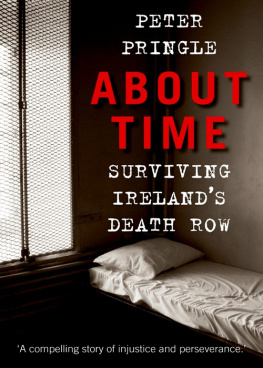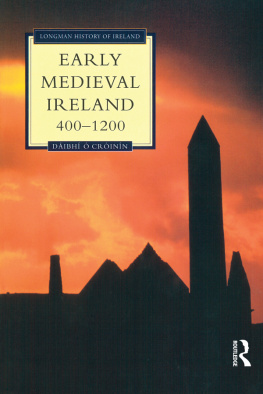Dedicated to
The Royal Irish Academy
The National Museum of Ireland
The National Museums of Northern Ireland
Without them the Irish Mesolithic would be very different
Published in the United Kingdom in 2015 by
OXBOW BOOKS
10 Hythe Bridge Street, Oxford OX1 2EW
and in the United States by
OXBOW BOOKS
908 Darby Road, Havertown, PA 19083
Oxbow Books and the individual authors 2015
Paperback Edition: ISBN 978-1-78297-778-0
Digital Edition: ISBN 978-1-78297-779-7
PDF Edition: ISBN 978-1-78297-781-0
Kindle Edition: ISBN 978-1-78297-780-3
A CIP record for this book is available from the British Library
Library of Congress Cataloging-in-Publication Data
Woodman, Peter C., author.
Irelands first settlers : time and the Mesolithic / Peter Woodman.
pages cm
Includes bibliographical references and index.
ISBN 978-1-78297-778-0 (hardback) -- ISBN 978-1-78297-779-7 (eISBN) 1. Prehistoric peoples--Ireland. 2. Mesolithic period--Ireland. 3. Excavations (Archaeology)--Ireland. 4. Ireland--Antiquities. I. Title.
GN806.5.W66 2015
569.909417--dc23
2015022494
All rights reserved. No part of this book may be reproduced or transmitted in any form or by any means, electronic or mechanical including photocopying, recording or by any information storage and retrieval system, without permission from the publisher in writing.
Printed in Malta by Gutenberg Press
For a complete list of Oxbow titles, please contact:
UNITED KINGDOM
Oxbow Books
Telephone (01865) 241249, Fax (01865) 794449
Email:
www.oxbowbooks.com
UNITED STATES OF AMERICA
Oxbow Books
Telephone (800) 791-9354, Fax (610) 853-9146
Email:
www.casemateacademic.com/oxbow
Oxbow Books is part of the Casemate Group
Front cover: Main picture: Hawkesworths 1773 illustration of a Haush encampment; top right: trihedral picks from (left) Lough Kinale, Derragh td, Co. Longford, (right) Clonava, Co. Westmeath.
CONTENTS
ACKNOWLEDGEMENTS
Many of the images, photographs, plans and diagrams belonged to and were the work of colleagues, each of whom is thanked for their speedy permission to allow their use. The National Museum of Ireland and my former employers at the Ulster Museum (now NMNI) both provided access to illustrations and when needed to the collections. Similarly, in a positive sense, the study of the Irish Mesolithic would not be the same without the numerous excavations that have taken place, in particular, over the last two decades, This volume is enhanced by the freedom of access that many excavators gave to me as well as the support offered by the Archaeologists in both The Department of the Environment, Northern Ireland and the National Monuments Service in the Department of Arts, Heritage and the Gaeltacht. Similarly members of staff of the NRA could also not have been more helpful. Help was also forthcoming from a number of commercial companies, in particular NAC, indeed, access was denied by none. Some of the illustrations were provided from far away, in particular those supplied by Ernesto Piana, Conicet, Ushuaia, Argentina; Knut Helskog in Troms, Norway, Doug Price of the University of Wisconsin, Madison as well as Erik Brinch Petersen in Copenhagen, Denmark.
No book can get as far as publication without the help and guidance of a team of unsung heroes. My thanks to Kerri Cleary who read my initial draft and cleared out numerous typos and gaffs and undertook a mammoth task in getting some sort of order and system into the bibliography. Frances Healy provided an important objective overview and advice where on occasions I got lost in the detail, over-emphasised the negatives or when, in my anxiety to make a point, I got caught up in repetitions or lost the sense what I was really trying to say!
Perhaps the most daunting thought was the task of creating, scanning and borrowing what turned into 32 pages of colour and 200 other illustrations as well as colour pictures. This would not have happened without, over a period of 3 years, the constant patience and advice of Hugh Kavanagh of Landmark Survey. Others provided crucial help, most notably Kieran Westley of the Centre for Maritime Archaeology UUC who helped resolve the task of documenting coast changes while Elaine Lynch helped turn diverse drawing into images of similar style.
Funding for this project has come from two sources. These are the Dean of Arts Research Fund (UCC) and the generous support of the National University of Ireland.
Finally, without the trust, patience and encouragement of Oxbow and, in particular, Julie, I am not sure I would have got there.
Part I
IN THE BEGINNING
Chapter 1
Why?
When I first started to write this book a few years ago it was with the very simple intention of providing an easy, and hopefully accessible, introduction to many of the issues associated with the Irish Mesolithic. In part it was a frustrated reaction to decades-old interpretations of the Mesolithic period in Ireland and was intended to reach the archaeological profession in general. That profession, which existed some years ago at the height of the Tiger Economy, is, however, no longer there! As I continued to write and think about why I still wanted to proceed with the project, I realised that, although I was in part writing it for myself, there were in fact multiple reasons to write the book. The archaeological profession, or perhaps the broader archaeological community, has always changed. Old misinterpretations will always be replaced by new ones. It has also provided an opportunity to reflect on the many ways in which the doing of archaeology has changed in my lifetime.
Almost exactly 50 years ago, just before I started to study Archaeology at Queens and after an enthusiastic visit to the then Belfast Municipal Museum, I had rushed down to the Kinnegar in Holywood in search of prehistory. The Kinnegar is a large ridge of sand on the shores of Belfast Lough, which runs in a south-westerly direction from the town. I would like to say that this resulted in initial discoveries of flint tools and that, ever since, I have been on a straight track attempting to elucidate the problems of Irelands first settlers. In reality and ironically, even before my visit I had made that classic First Year mistake of thinking I was looking for Megaliths rather than Mesoliths. This was compounded by the fact that everything I found consisted of natural fragments of flint nodules, so it was not until my first practical class with Arthur Apsimon that I discovered what I really should be looking for.
Shortly afterwards I was introduced to Hallam Moviuss The Irish Stone Age. This book, with its combination of a detailed environmental history of Ireland, along with the battered and rolled bits of flint that made up the Irish Larnian left me wondering, is that all there was to the Irish Mesolithic and where were the traces of the settlement sites on which they lived? I had an early desire to be an Egyptologist, which was followed by a plan to work on the Palaeolithic, especially in North Africa, but the initial experiences on the Kinnegar had left me with both an abiding interest in the Irish Mesolithic and an awareness of how easy it was for amateurs to not quite understand what they had found. Having worked for 17 years in the Ulster Museum I was also very conscious that this meant both informing people of the importance of what they had found and, at the same time, trying to gently explain to someone that the bit of stone that fitted so neatly into your hand was more likely to be a fortuitous natural accident. I have always maintained that working as a curator in a museum is one of the best archaeological educations available. It also reinforced a belief that the interested amateur is just as important as the professional archaeologist. Similarly, I have never regretted the move to University College Cork at the other end of the island.
Next page
